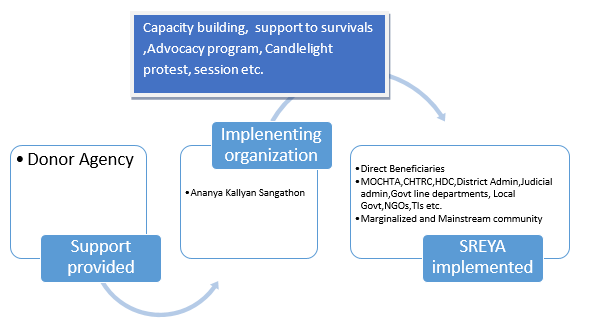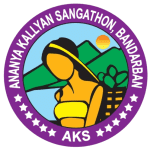Introduction
Young women are a crucial stage in life. It is a period where boys and girls ages 10-19 undergo physical, psychological and social changes, a transition from childhood to adulthood. Experiences during these formative years could spell the difference between individuals becoming productive or unproductive citizens of a country.
In Bangladesh there are 33.9 million adolescents, ranging from ages 10 – 19 and representing 21% of the total Bangladesh population. Although Bangladesh is a signatory of the Child Rights Convention, both parents and society often ignore children’s rights and needs. Financial constraints and societal norms are a major cause of the challenges faced by the young women of Bangladesh, especially the girls. Many of these problems occur due to a lack of awareness amongst adults about young women issues and strengths and also a general ignorance amongst young women of their rights. This is exacerbated by limited community resources directly supporting this special age group.
Young women of the Chittagong Hill Tracts (CHT), especially those in ethnic groups, have received even less development attention. While young women are thought to be in the perfect position to provide a unique opportunity to break a range of vicious cycles of rights violations that are perpetuated from one generation to the next, such as violence, poor nutrition, poverty and gender discrimination; initiatives to empower these young women, are not given significance. Since CHT young women concerns often remain overlooked, and their presence in national development agenda lies underrepresented, this developmental issue deserves a response following a rights-based approach. This is made even more crucial given CHT’s vulnerability to inter-ethnic conflict and natural disasters.
As this geographic area is home to different ethnic communities as well as Bengalis, ethnic, communal and familial differences translate into differing priorities for young women and different needs. Income earning pursuits and opportunities, cultural norms and practices as well as the value placed on education and participation, all play a role in creating the environment in which young women grow.
Goal:
Improved social security of young women and adolescent girls in Bandarban Hill District.
Outcomes:
1. Increased leadership skills of young women (age 13 to 25) and adolescent girls for raising their
voice in every social issue in Bandarban district.
2. Improved access to services (health, safety net, education, etc.) of young women and girls.
3. Increased capacity of local women’s networks to advocacy on inheritance right of ethnic
women in CHT
Outputs:
1.1. Organized women & girls in groups and provided skill on leadership, life skill at the community level;
1.2. Training provided to young women and girls on women rights issues and self-protection;
1.3. Technical support provided to young women and girls for movement and campaign on
Violence Against Women (VAW);
2.1 Linkage with relevant service providers for getting supports (e.g. health, education, legal
support, information, livelihood, safety net programs and other basic necessities) for young
women;
3.1 Training provided on capacity building to CHT women network members;
3.2. Organized advocacy events with Policy Makers/District Administration/Regional Council/Zila Parishad


